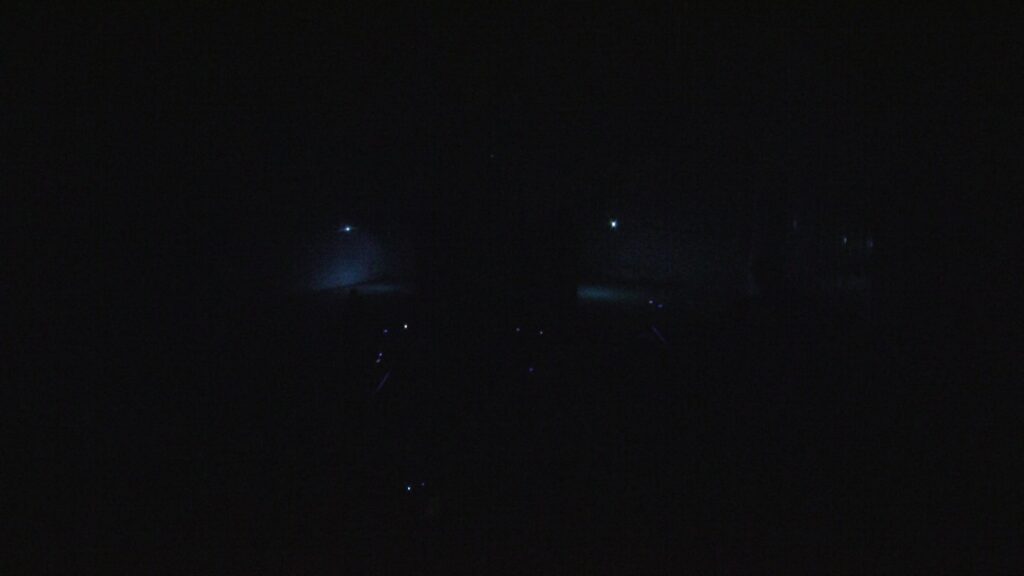Plains of Triton
Ruach Planitia – Ryugu Planitia – Sipapu Planitia – Tuonela Planitia
VOID – A sonic exploration of space by Belma Bešlić-Gál and Bernhard Gál | neue musik st. ruprecht | Vienna, Austria [05/06/2011]
Video credits: Bernhard Gál © Belma Bešlić-Gál
PLAINS OF TRITON
The genesis of the composition PLAINS OF TRITON is rooted in my long-standing fascination with the infinite variety of astronomical phenomena. In this case it is inspired by the planes of Neptune’s moon Triton: Ruach Planitia, Ryugu Planitia, Sipapu Planitia, Tuonela Planitia. These geological formations are a by-product of cryovolcanism and are dotted with dark spots (“maculae”) out of which vast quantities of icy lava once flowed. An additional peculiarity of this moon are its ice geysers, that can reach a height of up to 8000 meters. The names of the Triton Plains are of mythological origin: RUACH (the Island of the Winds), RYUGU (the Underwater Palace of the Dragon God of the Sea), SIPAPU (the Portal to the Underworld of the Pueblo People), TUONELA (the Realm of the Dead or the Underworld in Finnish mythology).
Ruach Planitia – Isle of Winds
rûaḥ (רוח)
Ruah, a concept deeply embedded in various philosophical and spiritual traditions, transcends its literal translation as “the breath” or “the wind”. In its essence, ruah represents the invisible, yet palpable force that animates the universe, an ethereal presence that infuses life into the corporeal, intertwining the spiritual and the material. It speaks to the notion of spirit or soul, a divine wind that moves through all things, animating them with purpose and vitality. Ruah is the whisper of the infinite, a bridge between the seen and the unseen, the temporal, and the eternal, reminding us of the interconnectedness of all existence.
Ryugu Planitia – Undersea Palace of Ryujin
„Ryūgū-jō (竜宮城/龍宮城)“
Ryūgū-jō or the Dragon Palace is a mythical underwater palace from Japanese folklore that is associated with the god of the sea, Ryūjin. This legendary coral palace, inhabited by dragons and other sea creatures, symbolizes the vast expanses of knowledge and experience that are beyond our comprehension. Ryūgū-jō’s narrative blurs the boundaries between the real and the mythical, suggesting a world where the natural and the supernatural exist side by side. In addition, the tale of Ryūgū-jō challenges the notion of temporal linearity and raises questions about the cyclical or fluid nature of existence.
Sipapu Planitia – The Portal
Sipapu, deeply rooted in the cosmology and spiritual beliefs of the Pueblo peoples of the American Southwest, is the portal through which their first ancestors emerged into the world. Philosophically, it represents more than its physical manifestation as a small hole or indentation in the floor of a kiva (a ceremonial structure) – it symbolizes the point of origin and connection between the spiritual and the physical worlds, serving as a metaphorical passageway through which beings move between the realms.
Tuonela Planitia – Underground Realm Across Black River
Tuonela, in Finnish mythology, is the realm of the dead or the underworld, a place where souls journey after death. The journey to Tuonela is often depicted as a passage that requires crossing a dark river, symbolizing the transformative journey of the soul, highlighting themes of change, passage, and renewal. The solitary and often silent landscape of Tuonela can be seen as a metaphor for the inward journey of reflection and introspection, confronting the shadows and mysteries within.
Belma Bešlić-Gál [05/2011]
Plains of Triton_live@Ruprechtskirche_Vienna

VOID – A sonic exploration of space by Belma Bešlić-Gál and Bernhard Gál | neue musik st. ruprecht | Vienna, Austria [05/06/2011]
Photo credits: Bernhard Gál ©
DATA
Duration: ca. 18‘
Instrumentation: Alto Flute, Percussion (wind chimes, crotales, rain stick, woodblock, glockenspiel, tam-tam, vibraphone, bass drum), Violin, Violoncello, Sound-and-Light Projections, Fog Machines
Premiere: neue musik st. ruprecht [05/06/2011, Ruprechtskirche, Vienna]
Supported by SKE Fonds Austria, Verein zur Förderung der Neuen Musik im Kirchenraum, IGNM, Wien Kultur, bm:ukk
List of performances
VOID – A sonic exploration of space by Belma Bešlić-Gál and Bernhard Gál | neue musik st. ruprecht | Vienna, Austria [05/06/2011]
Ensemble: Gisela Mashayekhi-Beer [alto flute], Berndt Thurner [Percussion (wind chimes, crotales, rain stick, woodblock, glockenspiel, tam-tam, vibraphone, bass drum)], Fani Vovoni [violin], Michael Moser [Violoncello]
